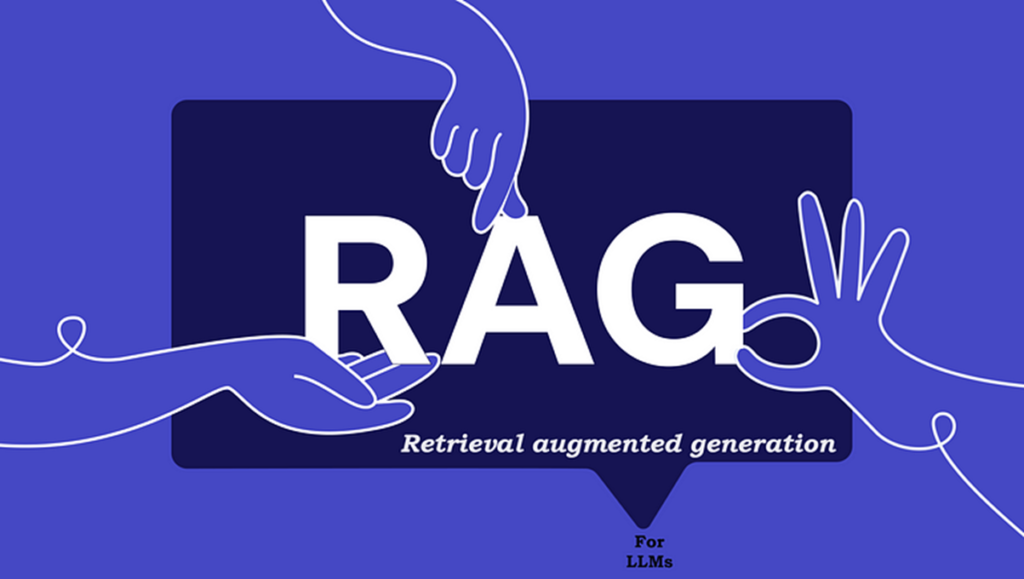Introduction to Retrieval Augmented Generation (RAG)
 Rajesh
Rajesh- 0
In today’s field of artificial intelligence, where language models are highly valued, one of the most critical requirements is to ensure that the answers generated can be reliably accurate. Retrieval Augmented Generation (RAG) is an innovative artificial intelligence system that aims to improve the quality of responses produced by LLM using additional data sources. But what exactly is RAG and how does it work?.

Understanding RAG: Enhancing LLMs with External Knowledge
The retrieval-augmented generation, at its most fundamental level, is a framework based on Artificial Intelligence with the goal of enriching AI language models by augmenting their internal representation with information and facts from external knowledge bases. Thus, the incorporation of external knowledge would improve the LLM-generated responses in terms of reliability and accuracy and also allow users to gain some understanding of how this model generates such responses.
The Challenge: Inconsistency in LLM Responses
However, to fully appreciate how RAG can help deal with this issue, it is important to recognize the fundamental inconsistency of LLM outputs. Although LLMs can ingest great masses of text data and discern the statistical dependencies between words based on their co-occurrences, they fail to grasp fine nuances of semantics or explicit contextual meanings, making frequently incorrect decisions.
The result may be inappropriate responses that deviate significantly from human expectations, as if LLM simply reproduced combinations found during training instead of logical conclusions.

The Solution: Training LLMs with External Expertise
RAG tackles this task head-on by training LLMs on external resources of know-how, making sure that responses are anchored in reliable records. By supplementing the version’s inner representation with external records, RAG not only improves the quality of generated responses but also complements transparency and trustworthiness for users.
Key Benefits of RAG
Implementing RAG in LLM-based question-answering systems offers several key benefits:
Access to Current and Reliable Facts: By retrieving information from external knowledge bases, RAG ensures that LLMs have access to the most current and reliable facts, improving the accuracy of generated responses.
Transparency and Trust: Users have access to the sources of information used by the model, allowing them to verify the accuracy of generated responses and ultimately trust the model’s output.
Reduced Data Dependency: RAG reduces the need for continuous training and updating of LLMs with new data, lowering computational and financial costs, particularly in enterprise settings.
How RAG Works: A Two-Phase Process
RAG operates through a two-phase process: retrieval and content generation.
Retrieval Phase: In this phase, algorithms search for and retrieve snippets of information relevant to the user’s prompt or question from external knowledge bases. These facts are then appended to the user’s query and passed to the LLM.
Generation Phase: In the generation phase, the LLM draws from both the augmented prompt and its internal representation of training data to synthesize an engaging and accurate response tailored to the user’s query.
Real-World Applications of RAG
IBM Research has been at the forefront of leveraging RAG to enhance customer care chatbots. By training these chatbots on verified and trusted content, IBM ensures that customers receive personalized and accurate responses without needing constant manual scripting or training.
Challenges and Future Directions of RAG
Even as RAG represents a good sized advancement in improving the abilities of LLMs, it isn’t without its challenges. As AI researchers keep to innovate and refine the framework, there continue to be interesting challenges in optimizing each the retrieval and technology stages of RAG to make sure the very best great responses.
Conclusion
Retrieval augmented generation holds immense promise in revolutionizing the capabilities of large language models by grounding them on external sources of knowledge. As AI continues to evolve, RAG stands as a beacon of innovation, paving the way for more accurate, transparent, and trustworthy AI-powered interactions.
